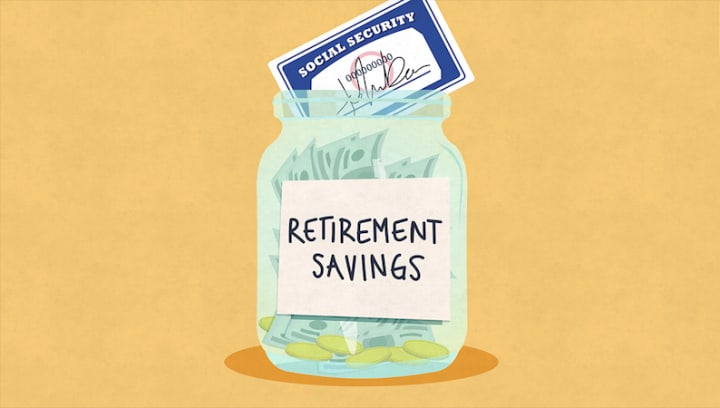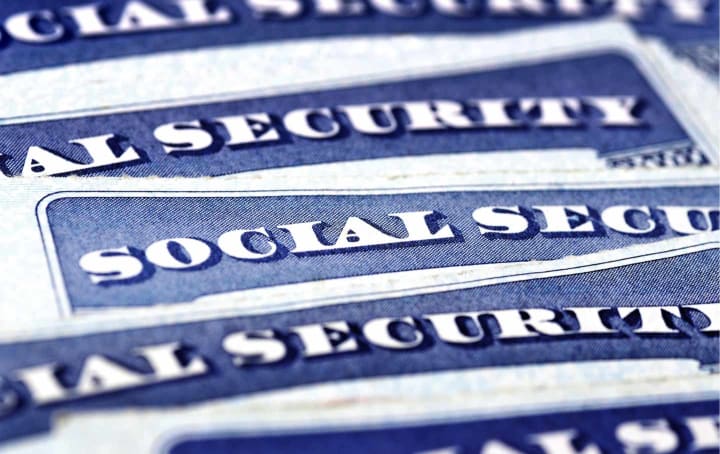Do You Actually Understand Social Security?
You pay into it with every paycheck you make, but do you really understand social security?

Social Security is one of the biggest programs in American history, and for many seniors, it is the only way that they can survive in the current economy. Everyone has been impacted by it, even if you've never been privy to its benefits.
Every American citizen gets a Social Security card as legit government identification. Credit bureaus search us up by our Social Security number. In every paycheck that takes out tax withholdings, you contribute to the Social Security safety net.
As much as it impacts our lives, most people really don't understand Social Security and what it's supposed to do. Here's the scoop.
What's Social Security?

Before you can really understand Social Security in its entirety, let's talk about what happens when you don't have something to fall back on in society. (Hint: It's ugly.)
Back in the olden days, living in America meant that you had no safety net aside from the good faith of friends and family. If you were old and had no family members to care for you, you probably were going to die. The poor were second-class citizens.
America, back during this time, was not easy to live in. The poor were allowed in almshouses, poor houses, psych wards, or in jail. It was ugly. During the Great Depression, many middle-class Americans saw their entire life savings ripped away.
It took years for America to be able to climb out of the Great Depression. President Roosevelt chose to create a safety net that would help protect the old, the disabled, and the families of deceased workers. He called it Social Security.
Now, let's understand Social Security's initial goals...
Initially, Roosevelt wanted this safety net to be a safety net—not the be-all and end-all of personal finances. It was designed to be an "in case of emergency" fund for every American citizen so that people would not end up starving in the streets.
The idea was that everyone would be able to start investing in the stock market, and that companies would help bolster retirement. There was never a point where they thought people wouldn't talk about retirement plans. A pension or a fund was just assumed to be the way things were done during the 1930s and 1940s.
A retirement fund was something that was just assumed to be there. Nowadays, people are starting to ask, "What retirement?" That's where a lot of the issues we're facing now are happening.
Now, let's talk about how Roosevelt set up Social Security.

To understand Social Security, it's best to think of it being like a large pot that's stocked with two primary funds. Both funds are divided by who they serve. One serves the disabled, while the other serves elderly people and surviving families.
These two funds are the Old Age and Survivors Insurance fund and the Disability Insurance Fund. OASI and DI are both geared towards serving different disadvantaged portions of the US population.
Everyone who pays taxes pays OASI and DI as part of their state and federal taxes. If there's extra money in the fund, the Social Security Administration will bank it into an extra fund and let it gain interest. This is later funneled into other social programs.
Now, let's understand Social Security's benefits...
Every single American citizen will get a number that is placed on their Social Security card. This number, issued out at birth or citizenship, is made to help track how benefits are disbursed.
If you are disabled, underprivileged, elderly, or the survivor of a serious tragedy, chances are that you have relied on this massive social safety net before. Anyone who has ever received welfare probably has Roosevelt to thank for their benefits.
Hardship is reason enough to receive income from the pools—but most qualify through age.

SSI, or Social Security Income, is often what helps the nation's poor afford food, rent, utilities, and other necessities. You don't have to have a work history to qualify for welfare. It's also a state-approved form of identification, which is perfect for people who want to get a driver's license or rent a room.
That being said, most people qualify for welfare through the state by being diagnosed with a disability that impedes work or by reaching the age of 60. Once you reach 62, you can automatically start withdrawing your SSI if you so choose.
Unlike with welfare, being placed on SSI due to age has certain restrictions on how much you can benefit. After all, there's only so many retirement benefits to go around.
It's worth noting that you don't have to claim SSI.
If you're 65 and don't want to claim your benefits, you don't have to. That's not an issue. It may not make sense, but there are people out there who skip out on their benefits. In many cases, the reason why they skip on SSI is because they don't understand Social Security at all.
If you are a working citizen who is not undergoing extreme hardship or have been diagnosed with a disability, your SSI income will likely be in the form of retirement. The factors that change how much you get include...
- Your Age. If you start withdrawing at age 62, you will lose a lot of extra money. It's ideal to start withdrawing at age 65, where you will get the full amount of money you paid in.
- Your Past Wages. The SSA takes the 35 years you got the highest wages and averages them to get a number called your Average Indexed Monthly Earnings (AIME). They use your AIME to determine your income. Higher incomes get higher payouts.
- Your Job. Government workers get a different formula than regular workers.
If you're looking to understand Social Security benefits and how you can maximize yours, then you might want to check out Laurence J. Kotlikoff's Get What's Yours. It's a book that's devoted to understanding tax law and maximizing SSI.
There are limits to how much you can get per month.
Right now, Social Security accounts for around 40 percent of the average person's retirement income. However, there's something you need to be aware of. You can't work earning $100,000 per year and then get a $5,000 per month check.
As much as you may want to max out your income and skip retirement savings altogether, you can't. Federally, there is a maximum SSI income level of approximately $2,300 per month.
One thing you need to understand about Social Security is that it's not currently sustainable.

If you ever hear people claim that they understand Social Security, and that they'll be able to rely on it for their old age, you're looking at a fool. As of right now, Social Security is not sustainable—and even the US government openly admits this.
By 2034, the amount of people paying into the pool will drop considerably below the number of people getting benefits from it. If things continue the way they are, we will only be able to get 77 cents for every dollar we are currently receiving.
If more people were to understand Social Security and its value, we might be able to save it.
Drastic reform is what's needed to make this program survive. Without it, a lot of honest, hardworking people will end up losing their future and retirement.
In the meanwhile, realizing how bad of a shape Social Security's in can help you understand why you need to invest and work towards the future rather than let Uncle Sam take care of it.
About the Creator
Cato Conroy
Cato Conroy is a Manhattan-based writer who yearns for a better world. He loves to write about politics, news reports, and interesting innovations that will impact the way we live.






Comments
There are no comments for this story
Be the first to respond and start the conversation.